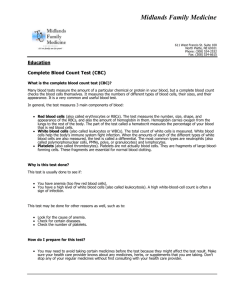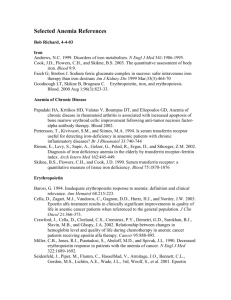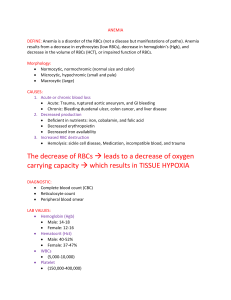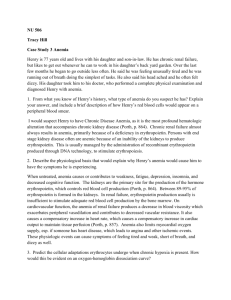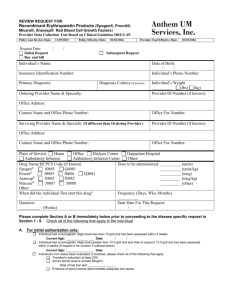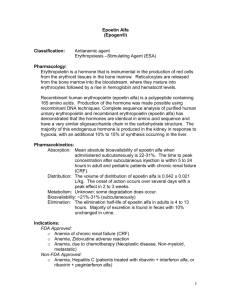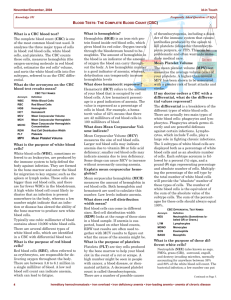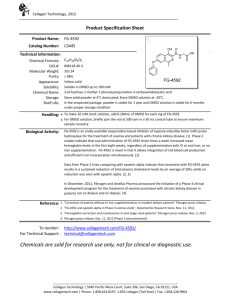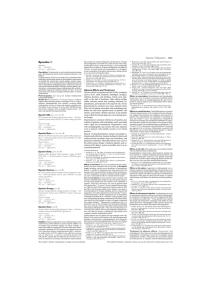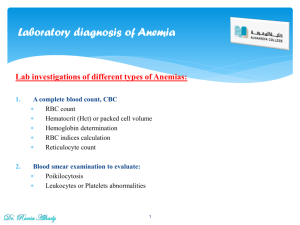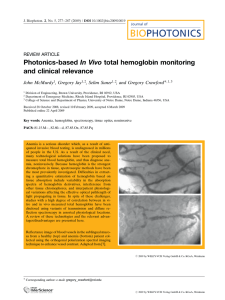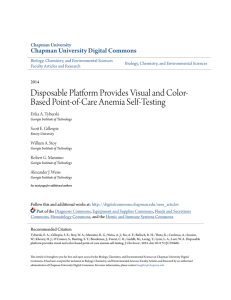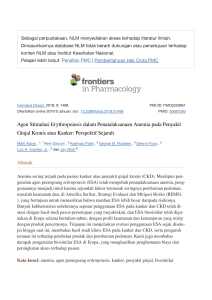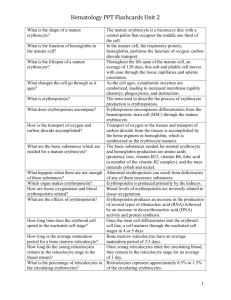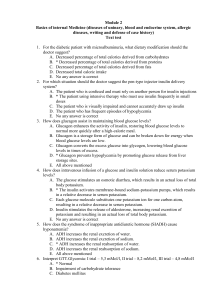Anemia, chronic renal failure, erythropoietin alpha
advertisement
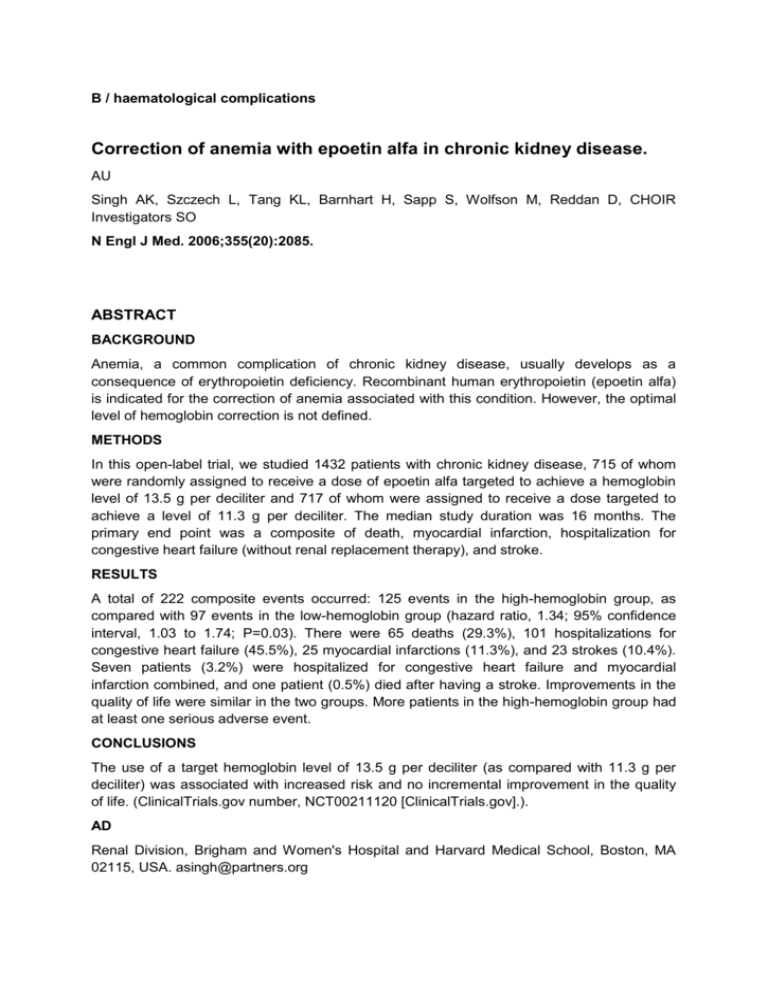
B / haematological complications Correction of anemia with epoetin alfa in chronic kidney disease. AU Singh AK, Szczech L, Tang KL, Barnhart H, Sapp S, Wolfson M, Reddan D, CHOIR Investigators SO N Engl J Med. 2006;355(20):2085. ABSTRACT BACKGROUND Anemia, a common complication of chronic kidney disease, usually develops as a consequence of erythropoietin deficiency. Recombinant human erythropoietin (epoetin alfa) is indicated for the correction of anemia associated with this condition. However, the optimal level of hemoglobin correction is not defined. METHODS In this open-label trial, we studied 1432 patients with chronic kidney disease, 715 of whom were randomly assigned to receive a dose of epoetin alfa targeted to achieve a hemoglobin level of 13.5 g per deciliter and 717 of whom were assigned to receive a dose targeted to achieve a level of 11.3 g per deciliter. The median study duration was 16 months. The primary end point was a composite of death, myocardial infarction, hospitalization for congestive heart failure (without renal replacement therapy), and stroke. RESULTS A total of 222 composite events occurred: 125 events in the high-hemoglobin group, as compared with 97 events in the low-hemoglobin group (hazard ratio, 1.34; 95% confidence interval, 1.03 to 1.74; P=0.03). There were 65 deaths (29.3%), 101 hospitalizations for congestive heart failure (45.5%), 25 myocardial infarctions (11.3%), and 23 strokes (10.4%). Seven patients (3.2%) were hospitalized for congestive heart failure and myocardial infarction combined, and one patient (0.5%) died after having a stroke. Improvements in the quality of life were similar in the two groups. More patients in the high-hemoglobin group had at least one serious adverse event. CONCLUSIONS The use of a target hemoglobin level of 13.5 g per deciliter (as compared with 11.3 g per deciliter) was associated with increased risk and no incremental improvement in the quality of life. (ClinicalTrials.gov number, NCT00211120 [ClinicalTrials.gov].). AD Renal Division, Brigham and Women's Hospital and Harvard Medical School, Boston, MA 02115, USA. asingh@partners.org COMMENTS See also the CREATE study (N Engl J Med 2006; 355:2071) Anemia has been defined by the World Health Organization (WHO) as a hemoglobin (Hgb) concentration below 13.0 g/dL for adult males and post-menopausal women, and an Hgb below 12.0 g/dL for premenopausal women Based upon these criteria, nearly 90 percent of patients with a glomerular filtration rate (GFR) less than 25 to 30 mL/min have anemia, many with Hgb levels below 10 g/dL. Erythropoietin stimulating agents (ESAs), have become the standard of care for the treatment of the anemia that occurs in most patients with advanced chronic kidney disease (CKD) and end-stage renal disease (ESRD). Anemia has been implicated as a contributing factor in many of the symptoms associated with reduced kidney function. These include fatigue, depression, reduced exercise tolerance, dyspnea, and cardiovascular consequences, such as left ventricular hypertrophy (LVH) and left ventricular systolic dysfunction. It is also associated with an increased risk of morbidity and mortality principally due to cardiac disease and stroke and with an increased risk of hospitalization, hospital length of stay, and mortality in patients with predialysis CKD. Pr. Jacques CHANARD Professor of Nephrology

